Serving Refugees – A Lesson in Collaboration
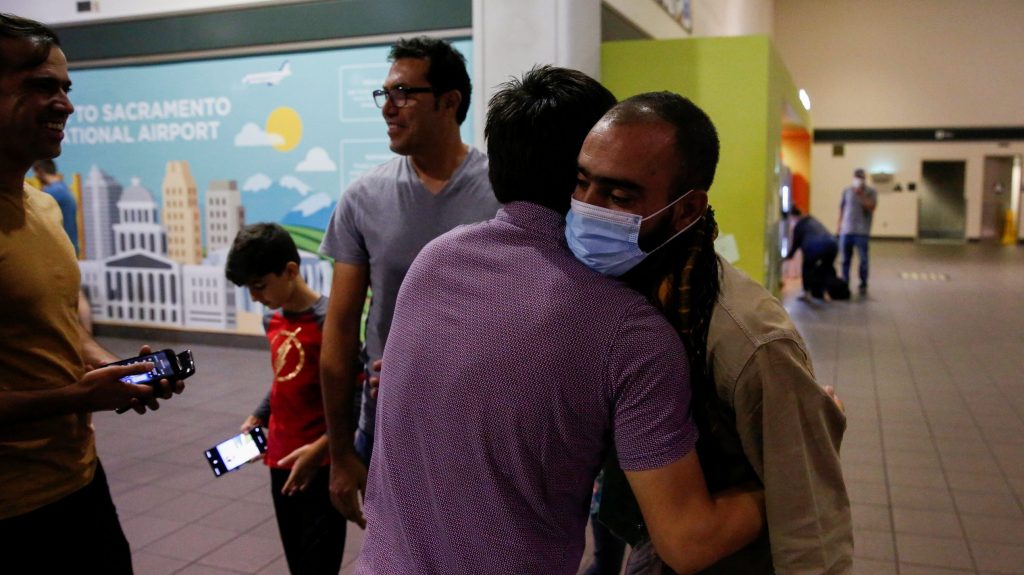
Valley Vision is creating a vibrant and prosperous economy by supporting development of a talented workforce – educated, trained and ready – for the 21st Century economy. The current wave of Afghan refugees has drawn attention to how these new arrivals are integrated into our local workforce system. A refugee is a person living outside of his or her country of nationality who is unable or unwilling to return because of persecution, or a well-founded fear of persecution on account of race, religion, nationality, membership in a particular social group, or political opinion. The Sacramento region resettles a large number of refugees each year and is considered one of eight refugee impacted counties in California. Our region has begun receiving what is expected to be approximately 1,600 refugees, including Special Immigrant Visa holders, in the coming months.
A Collaborative Approach
In California, refugee programs are administered through the Refugee Programs Bureau (RPB), a division of the Department of Social Services. In a uniquely collaborative arrangement, goals are achieved by partnering with counties, workforce boards, nonprofits, school districts, faith-based, ethnic and community organizations. Each County Board of Supervisors determines which agency within the county governmental structure will be responsible for administering the refugee programs. Most often the County Welfare Department (CWD) is the designated agency. However, in Sacramento, there is a unique partnership between the CWD that oversees the delivery of public assistance, and the Sacramento Employment and Training Agency (SETA), which oversees the delivery of employment and acculturation services and overall refugee program coordination. Since 1983, SETA has been responsible for planning, coordinating and managing grant funds allocated to the county to provide refugee-specific employment services. The local resettlement agencies regularly convene forums open to refugees, service organizations and other stakeholders, in an effort to continuously collaborate and improve upon services.
The Refugee Experience
When refugees first arrive at the Sacramento International Airport, they are greeted by representatives from one of five local resettlement agencies; Sacramento Food Bank and Family Services, Opening Doors Inc. Sacramento, Lao Family Community Development Inc., World Relief Sacramento and International Rescue Committee. These agencies provide welcome, resources and introduction to services to help individuals and families survive and acclimate for their first 90 days in the country. Shortly before the arrival of the refugees, the resettlement agencies arrange for their housing, which includes basic furnishings, appliances, climate-appropriate clothing, and some food typical of the refugees’ culture. After arrival, resettlement agencies help refugees start their lives in the U.S., assisting them with applying for a Social Security card, registering children in school, learning how to access shopping facilities, arranging medical appointments, and connecting them with needed social, employment and language services.
Refugee status is accompanied by employment authorization and refugees are expected to become employed quickly in order to afford the high cost of living in our region and to begin repaying their loans to travel to the U.S., which can cost thousands of dollars. These conditions make employment attainment essential to the well-being of refugee families. SETA works with a number of community based organizations, school districts and resettlement agencies to assist refugees with transitioning to employment as quickly as possible. Services provided include Vocational English as a Second Language training, employment placement services, on the job training, navigator services, social adjustment and cultural orientation. A full list of refugee employment service providers is located on SETA’s website.
Of the more than 20 million refugees of concern to the United Nations, less than 1% are resettled each year. Although historically the U.S. has resettled more refugees than other country, its resettlement program has waned recently with the most recent fiscal year having the lowest U.S. refugee limit since 1980. Each year the number accepted to the U.S. is set by the President in consultation with Congress. Additional information on this most recent wave of refugees, refugee resettlement and services is available at the following links: California’s Afghan Arrival Response, videos on the Refugee Resettlement experience, and the Sacramento Region’s local services. Creating inclusive opportunities for the regional refugee community is a critical function of our workforce system, and the collaborative efforts of these partners are critical to ensuring a high quality of life for these populations.
To keep up with Valley Vision’s work to advance a future-ready workforce in the Sacramento region, subscribe to our 21st Century Workforce email newsletter!”
Renee John is a Valley Vision Project Leader managing initiatives within the 21st Century Workforce impact area.
Seven Leaders Join Valley Vision Board in 2021
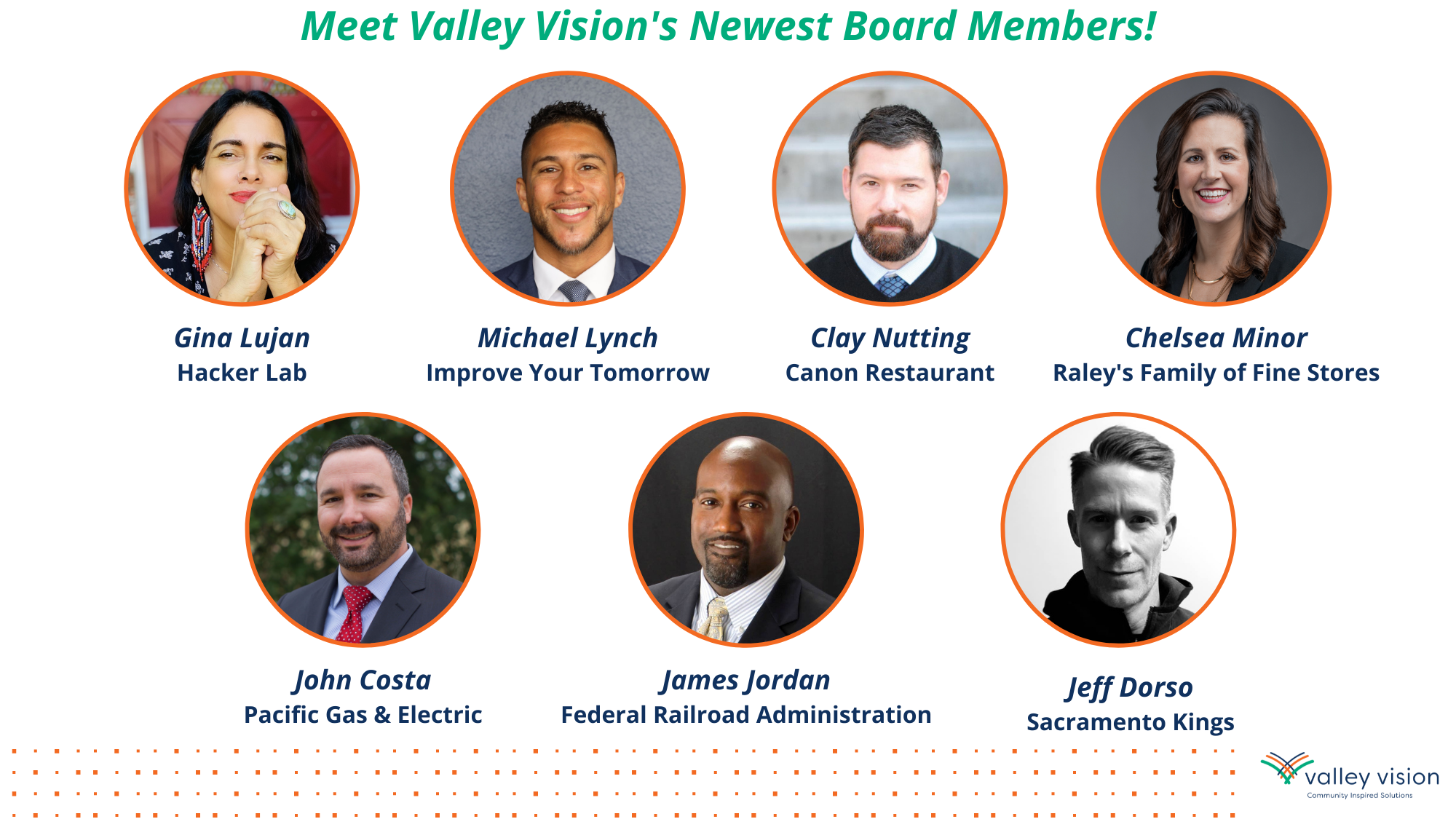
I am thrilled to share the news that seven truly outstanding local leaders have joined our organization’s Board of Directors in recent months, each who uniquely compliments Valley Vision’s core focus areas of workforce, innovation, food systems, civic engagement, and healthy communities. These individuals join an already impressive slate of directors who are committed to helping build a better future for our region.
Valley Vision is a unique organization with a special purpose: to make our communities the most livable in the nation. That’s why our board is composed of a diverse set of dynamic leaders who rely on Valley Vision’s independent research to identify current and future opportunities and to help solve complicated issues affecting quality of life through regional action. Their priority is to place the region’s future first and I am pleased to introduce you to them.

Meet Valley Vision’s 2021 slate of board members:
Chelsea Minor is Corporate Director of Public Affairs for Raley’s, an innovative, regional, family-owned grocery chain with stores founded and headquartered in Sacramento that operates stores across Northern California and Nevada. Chelsea is Raley’s lead spokesperson and oversees the company’s public affairs and brand reputation strategies. Her breadth of knowledge and industry connections will be instrumental in guiding Valley Vision’s important work in the food system space.
Clay Nutting is the owner and operator of Canon, among only a small handful of local restaurants recognized last year in California’s Michelin Guide. Clay co-founded a grassroots effort called Family Meal at the onset of the pandemic, which involved over two-dozen local and independent restaurants that provided over 250,000 meals to vulnerable residents across Sacramento County. His efforts in the community centered on food insecurity are tightly aligned with Valley Vision’s food insecurity and food equity strategies.
Gina Lujan is a social entrepreneur with 28 years of experience focused on building community, business development, innovation, strategy, and economic development. She co-founded Sacramento’s Hacker Lab in 2012, one of the city’s first local maker and coworking spaces that supports innovation through community-driven education and maintains a commitment to tangible access for all. Gina’s energetic entrepreneurial spirit and passion for education, opportunity, and advancement within underserved communities gives Valley Vision’s board a means for broader conversations and planning for strategies that support vulnerable populations.
James Jordan is a seasoned public service leader with a career in the transportation industry that spans over 25 years. He currently serves in the Federal Railroad Administration as Railroad Administrator and is responsible for the safety and operational oversight for every commuter railway located west of the Mississippi River. As an integral leader in the FRA, James works with the US Department of Transportation to promote and enforce safety throughout the U.S., including the rehabilitation of rail passenger services, supporting research and development, and advancing transportation for passengers and the general public. James’ boundary-breaking leadership at the FRA as well as his long-term commitment to the Sacramento region will support Valley Vision’s mission of equity, prosperity, and sustainability.
Jeff Dorso is the Senior Vice President and General Counsel for the Sacramento Kings, overseeing all legal and real estate development-related matters for the Sacramento Kings and its related companies, including the LEED Platinum Golden 1 Center, all real estate and media holdings, Sacramento Kings Guard (the NBA 2K eSports team), the Sacramento Kings Foundation, and the Stockton Kings (the NBA G League team). Jeff’s leadership in shaping development in Sacramento as well as his action-oriented mindset will help push Valley Vision towards effective and responsive action that supports the prosperity of our region.
John Costa, Senior Manager of Government Relations & Local Public Affairs for Pacific Gas & Electric (PG&E) Company in Northern California, works with community leaders and organizations throughout California, supporting PG&E lines of business and overseeing the day-to-day operations of various projects and company initiatives. John’s long history of engagement with government agencies and community based organizations as well as his commitment to healthy and sustainable communities will help Valley Vision support clean and sustainable communities for our region.
Michael Lynch, Co-Founder and Chief Executive Officer of Improve Your Tomorrow, is a social entrepreneur and certified professional fundraiser. As Valley Vision continues to seek workforce development solutions that answer a growing inequity gap across our most vulnerable communities, Michael’s work to improve academic outcomes for “at-promise” young people and transform systems that have historically failed communities of color will be especially valuable.
To keep up with Valley Vision’s work to advance livability in the Sacramento region, subscribe to our Vantage Point email newsletter!
Evan Schmidt is Valley Vision’s Chief Executive Officer.
Investing In Our Region

New, historic investments in regional economic recovery present our region with the opportunity to rebuild and grow, with a commitment to community and equity at the center of it. What have we done, and what must we do to take advantage?
This summer, we are seeing historic financial commitments to infrastructure, economic, environmental, and community resilience through both state and federal government channels. Just yesterday, the U.S. Senate passed a $1 trillion dollar infrastructure bill that will support expanded high speed internet access, roads, bridges, airports, Amtrak, and more. This will be the largest infusion of infrastructure investments in more than a decade and will certainly be felt within our region as those dollars get deployed across the country. In addition to infrastructure dollars, we have seen a significant commitment to recovery and community investment from both the Coronavirus Aid, Relief, and Economic Security Act (CARES), starting in 2020, and the American Rescue Plan Act (ARPA), passed in February 2021. The ARPA funds, which are just beginning to be deployed, will be used to meet pandemic response needs and rebuild a stronger, and more equitable economy as the country recovers. One example includes the Homeless Master Siting Plan that the City of Sacramento passed on Tuesday night, which will use $100 million in ARPA funds. We are seeing other ways the funds will be deployed including the Economic Development Administration’s recent release of a series of Notices of Funding Availability directed towards regional economic recovery.
In addition to these significant federal commitments, we are also seeing state investment opportunities. The state of California boasted an astonishing $75 billion budget surplus and, as a result, the 2021-22 California state budget and new recovery programs provide abundant opportunities for critical infrastructure improvements as well as needed community and regional recovery initiatives. For example, in late July, Governor Newsom made a $6 billion commitment to equitable and affordable access to broadband, providing needed dollars to close infrastructure and affordability gaps in underserved areas throughout the state. Additionally, the budget includes $3.7 billion for climate resilience, $600 million for inclusive regional economic development in a pending trailer bill, $1 billion for wildfire prevention and response, and $1 billion for workforce development statewide, to name just a few programmatic investments.

What does all this mean for our region? It means that we have the opportunity for big regional initiatives and bold, ambitious, and achievable goals. Luckily, we aren’t starting from scratch. We already have a roadmap for inclusive economic growth and an approved Comprehensive Economic Development Strategy in the Prosperity Strategy. We have bodies like the Capital Region Climate Readiness Collaborative, the Cleaner Air Partnership, the Connected Capital Area Broadband Consortium, the Sacramento Coalition for Digital Inclusion and many other regional and localized collaborative bodies who are shaping priorities and ideas for regional initiatives.
As we bring these investments into our region, we must all be committed to ensuring it is used to advance access to opportunity for all – particularly our neighborhoods and communities that have too often been overlooked. The rising tide must lift ALL boats. This is the time to build on our existing frameworks with additional inclusive, collaborative, and equity-centered planning to achieve bold, moonshot goals. What is your vision for a resilient, prosperous, equitable, and sustainable future for our region? Let’s work together to create impactful and bold initiatives that will serve our region and communities now and for generations to come. Contact us with any ideas or to stay engaged.
To keep up with Valley Vision’s work to advance livability in the Sacramento region, subscribe to our Vantage Point email newsletter!
Evan Schmidt is Valley Vision’s Chief Executive Officer.
Recap: Challenges and Opportunities in Our Region’s Food System
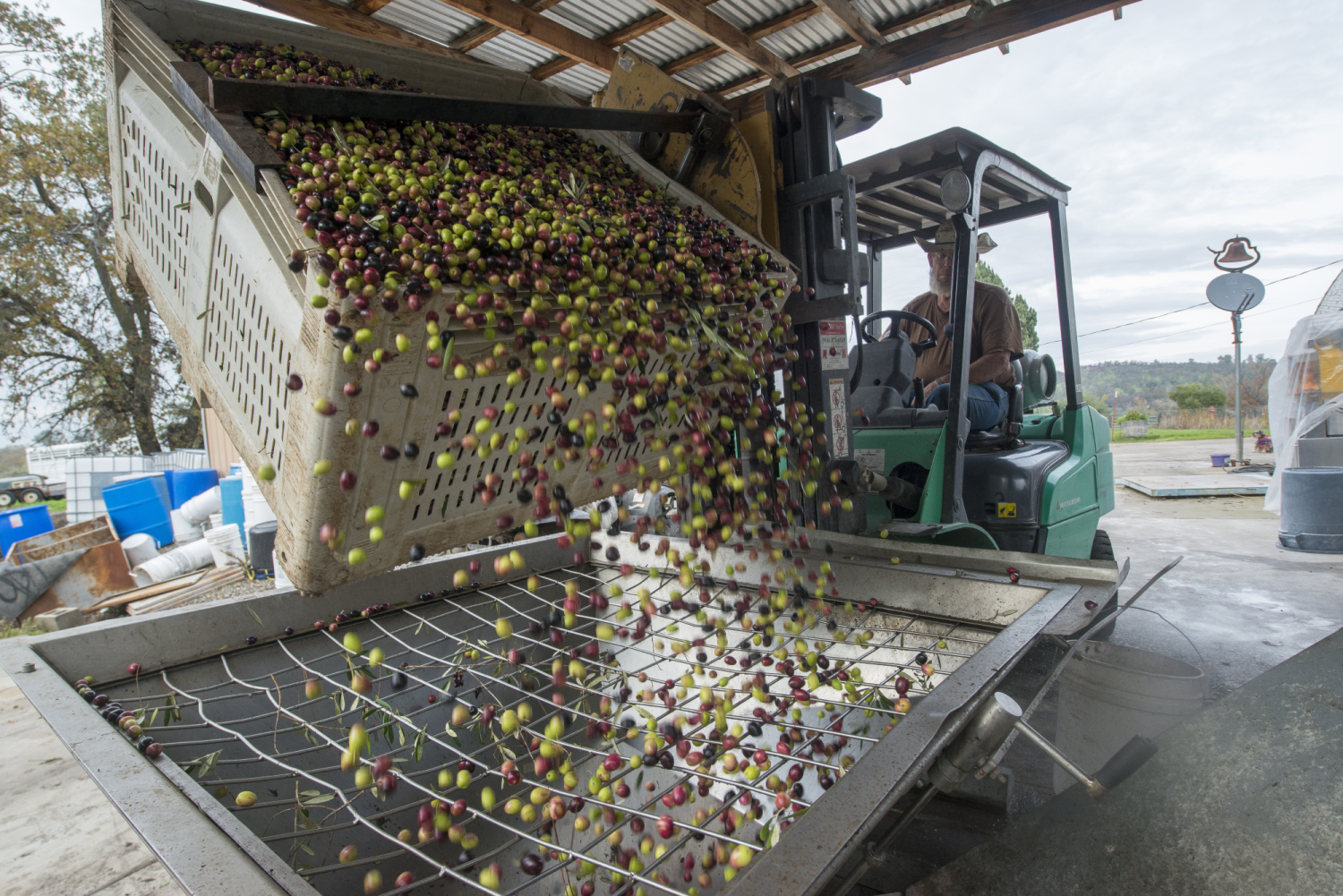
Valley Vision is proud to be researching and working alongside partners to support investment in the region’s food system.
Last month, as part of the 2021 Food System Action Plan update, Valley Vision hosted a series of Listening Sessions in topical areas as an opportunity to identify funding, capacity, and resource needs in the region’s Food System. We were joined by almost 200 participants who shared their expertise in workforce development and career pathways; viability of agriculture and land preservation; environmental sustainability and climate change; health and nutrition education; healthy food access and food security; and food economy and local market development.
Supported by the Sacramento Region Community Foundation, the 2021 Food System Action Plan (FSAP) is a regional food system investment strategy that will identify best practices, priorities, prevailing challenges, opportunities, and funding recommendations related to the region’s food system for the communities of El Dorado, Placer, Sacramento, and Yolo Counties. The goal is to increase the vitality of the region’s food system and to identify financing strategies and mechanisms to support a more equitable, health-promoting and accessible food system for all residents of the Greater Sacramento Region. The report will be released this Fall, and excitingly, for the first time, the report will be paired with a Food System Resilience Poll, in partnership with the Sacramento State Institute for Social Research (ISR) and Capital Public Radio. The poll covers similar topics related to the food system and will inform the Food System Action Plan. Both of these reports are slated to be released in Fall 2021.
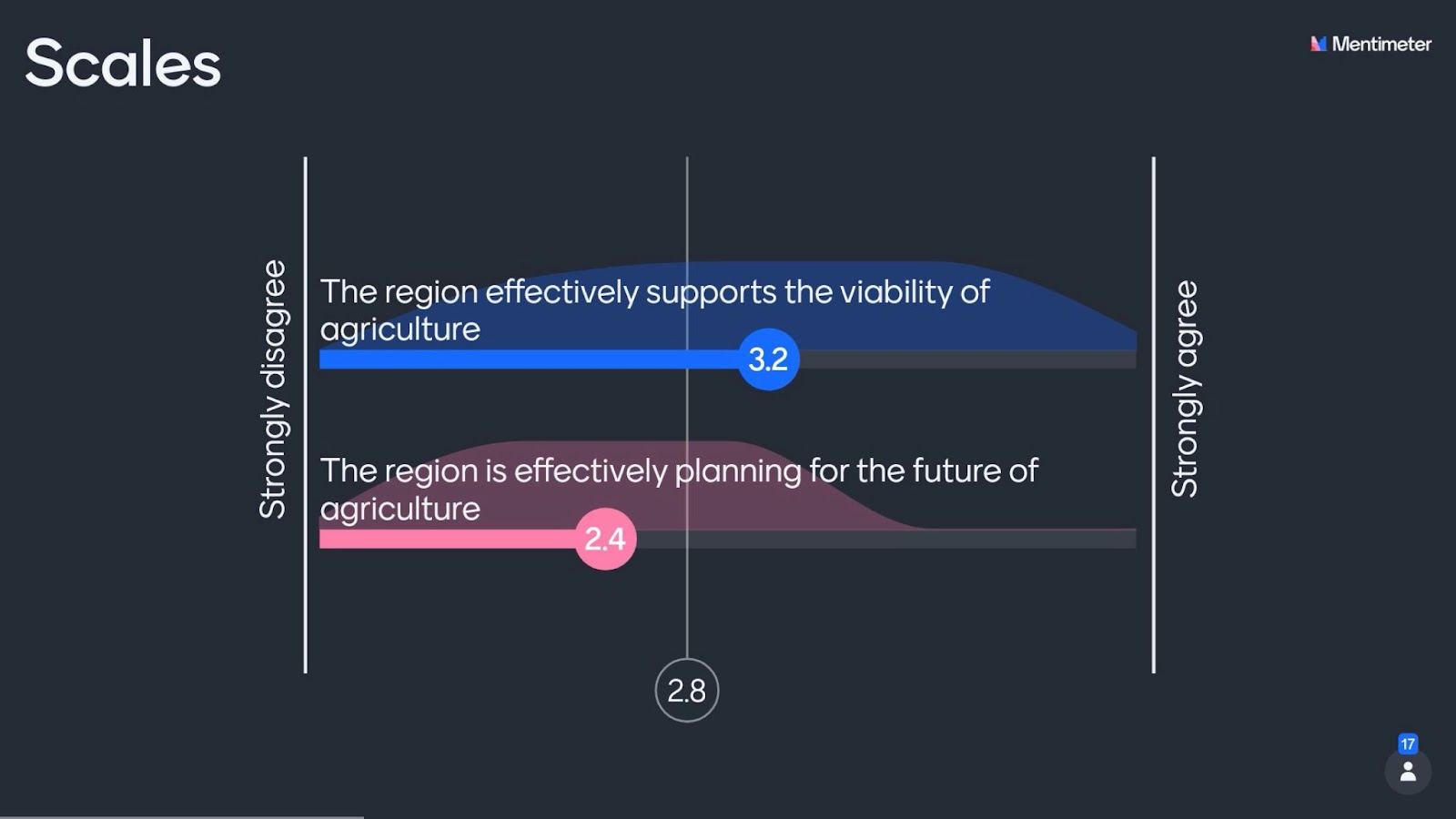
If you weren’t able to attend the listening sessions, below is a brief summary of each session:
- Session #1: The participants in the Careers in Food and Agriculture session discussed the manufacturing, processing, and distribution networks of the food system, illustrating the diversity of farm operations in the region. Although the session reminded us that the region has many successful Career Technical Education (CTE) programs in food and agriculture-which prepare high school students for college – challenges remain in sustaining, building, and retaining a local workforce, including the next generation of farmers and food producers. Lack of awareness of workforce opportunities and less than positive image were also challenges.
- Session #2: Land, capital and broadband access, agriculture technology, local markets, and land preservation were constant themes in the Viability of Agriculture session. Despite land conversion being a threat to agriculture’s viability, our region is doing better than others in the state; however, access to land to start a farm or a community garden remains a challenge. Workforce is another challenge.
- Session #3: During the Environmental Sustainability session, participants discussed local food production, food waste, edible food recovery, and the impacts climate change has had (and will have) on the food system, as is manifesting now. Although food hubs were discussed in some fashion in every session, in this session they were discussed extensively as a mechanism to reduce greenhouse gas emissions associated with transportation of produce and international trade and to provide additional capacity for packaging, processing and distribution of local produce for local consumption.
- Session #4: The Healthy Food Access and Food Security session showcased the strong network of nonprofits in the region, especially those in the emergency food system, who work to provide access to fresh, local, and nutritious food to under-resourced communities. In spite of the increased impact on this sector due to the pandemic, participants shared that consistent and expanded funding for infrastructure, organizational capacity and growth to manage the increased levels of clients and food remains a challenge.
- Session #5: In the Health and Nutrition session, the importance of family-based nutrition education and supply chain awareness was emphasized. A number of participants mentioned that most people are not aware of the correlation between food, health, and eating habits, and that robust educational support is needed to help promote healthy eating and nutrition literacy.
- Session #6: The Food Economy session focused on institutional purchases, entrepreneurship support, and local procurement partnerships. There are a significant number of small farmers in the region, but corporate producers can produce food for a lower price, making local food procurement and local economic development challenging. There are innovative efforts through schools and hospitals that can be models for increased local procurement and purchasing partnerships, support local producers and keep more dollars local.
The listening sessions revealed what most of us already know: As America’s Farm-to-Fork Capital, we have a lot of work to do but we have the infrastructure and the strong networks to do it. If we are organized as a region, we can better promote, support, and partner with one another to bring additional funding to the region. We look forward to sharing additional challenges, opportunities, and funding recommendations in the Fall when we release the 2021 Food System Action Plan.
The full recordings and presentation slides are available on Valley Vision’s website. If you weren’t able to attend the sessions and would like to provide comments for the FSAP, we have created a survey to gather additional input. Please reach out to Grace Kaufman (Grace.Kaufman@valleyvision.org) should you have any questions.
To keep up with Valley Vision’s work to advance livability in the Sacramento region, subscribe to our monthly Food and Ag newsletter!
Grace Kaufman is a Valley Vision Project Manager working in the Food and Ag and Clean Economy impact areas
A Broader Vision: Road Tripping Across America

Bigger rivers. The world’s largest Viking statue. The best mac and cheese I’ve ever had. A problematic coolant leak. All of these experiences and more contributed to an amazing 41-day road trip with my partner in June and July of 2021. It also brought a new perspective to my work at Valley Vision as l celebrated my seven-year anniVVersary last week (how time flies!).
Road trips are an American tradition – aligning the freedom of the automobile with the exploration of our country’s vast open spaces, beautiful national parks and forests, and distinct urban centers. For most of us mere mortals, our lives are largely confined to the physical spaces in which we live and work. So, to access a wider vision of our world by seeing the country – and a great deal of its nooks and crannies which you can only access by car – is a deeply rewarding experience. After a year of global trauma and emotional exhaustion resulting from the COVID-19 pandemic, this trip, for me, was sorely needed.
At Valley Vision, we’re focused on improving quality of life in our own Sacramento region, but we have also been at the center of important statewide projects like the Listos California Emergency Preparedness Campaign, and statewide leadership networks like the CA Stewardship Network. To learn from other regions, and to see their approaches to problem-solving firsthand, is a deeply valuable practice as we seek to improve our own region. Many of our local chambers of commerce organize ‘Study Missions’ to visit and learn from places elsewhere in the country just for this reason (one of which I was privileged to participate in back in 2018). So I took that line of thinking on the road with me and applied it as I explored other communities across the nation.

I committed to work remotely while on the road roughly half-time, continuing to move projects forward, participate in calls and meetings, and build the biweekly ‘Vantage Point’ email newsletter that people know and love. Cell coverage was sometimes more spotty than expected, accounting for time changes was a fun brain game, and coffee shops were a godsend (quite literally in one case, when a Christian coffee shop in Billings, MT allowed me to use their state-of-the-art conference room to facilitate the June Cleaner Air Partnership Luncheon on the day I was traveling from North Dakota to Yellowstone).
We spent time in a number of great places during our time on the road, and had very little “rest” time. I made it a point to explore the approaches to urbanism in each of these places, including architecture, use of space, and intangibles like the “energy” of a place. Checking out key landmarks was also a priority, such as ‘Tech Square’ in Atlanta, which Sacramento’s ‘Aggie Square’ is modeled on, or San Antonio’s famous River Walk, a world-class riverfront attraction. These small-scale ‘Study Missions’ exemplified the spirit of Valley Vision – to investigate and learn, but to have fun doing it.

We drove my trusty 2006 Honda Odyssey, which ran great until we hit Yellowstone. A coolant leak had me filling up the radiator with antifreeze and water every couple of hours for several days of touring Yellowstone, to avoid an overheated engine. I am convinced that a marmot or chipmunk chewed the water pump cable – an occurrence some high-elevation backpackers are familiar with. It was very nerve-racking to drive with an eye on the temperature gauge, and we eventually had to get it repaired in Spokane, WA before being on our way. My advice: check your fluids! And AAA, I learned the hard way, doesn’t provide roadside services in National Parks. We spent nights in the following places, either in a hostel, Airbnb, camping, or “boondocking” (sleeping in my van in a national forest or legal parking area), and the order of the list aligns with our route:
- Las Vegas/Red Rock Canyon
- Flagstaff/Grand Canyon
- Santa Fe
- San Antonio
- New Orleans/Atchafalaya National Wildlife Refuge
- Atlanta
- Charleston
- Charlotte
- Asheville/Great Smoky Mountains
- Cincinnati
- Detroit
- Chicago
- Minneapolis
- Theodore Roosevelt National Park (North Dakota)
- Yellowstone National Park/Grand Teton National Park
- Bigfork/Glacier National Park
- Spokane
- Seattle/Olympic National Park
- Portland
- Bend/Crater Lake National Park
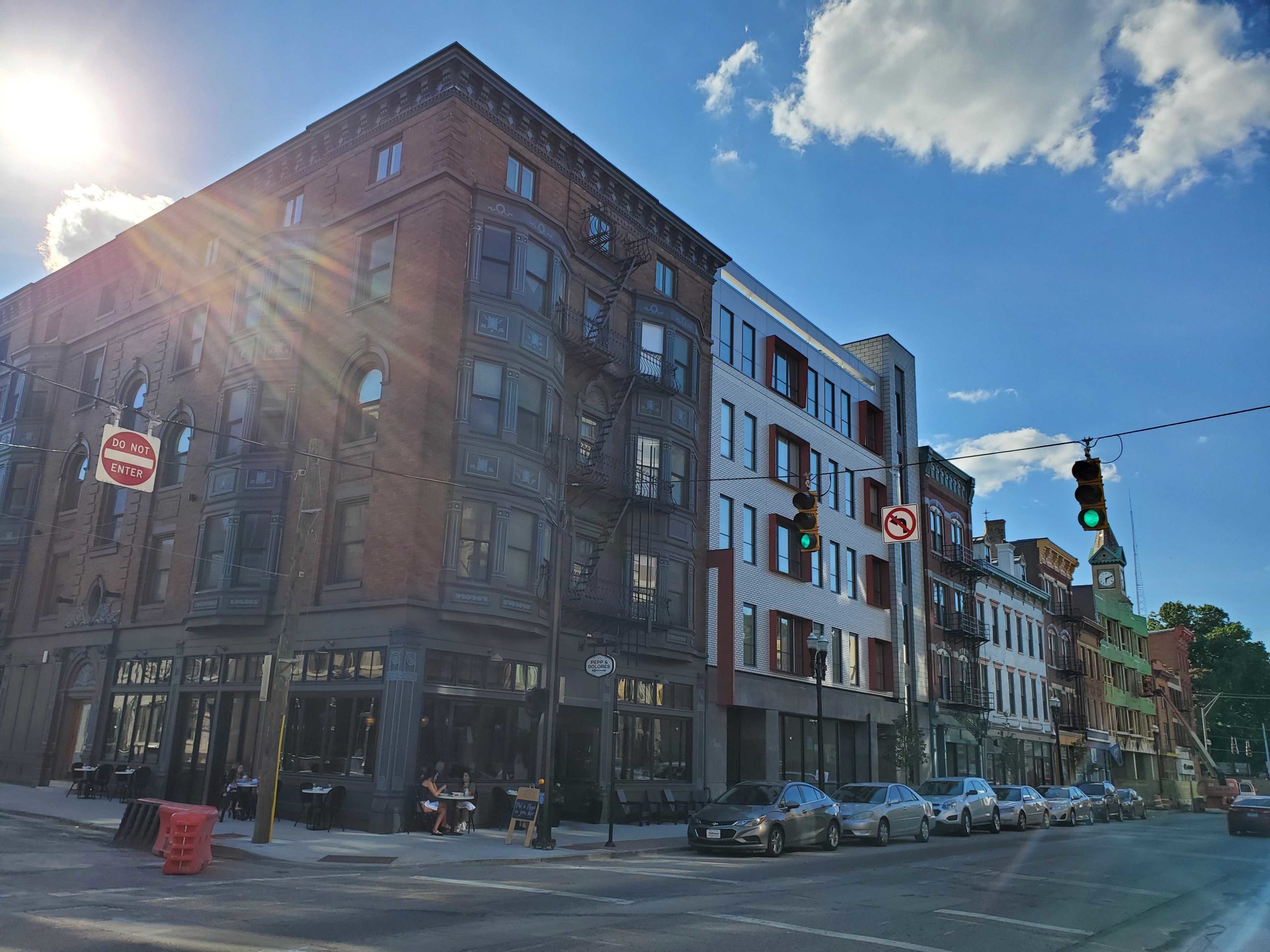
As a white male who has experienced deep privilege over the course of my life, it was important to educate myself on some of the history of the places we were passing through – particularly in the South. On our way from New Orleans to Atlanta, we made several stops at Civil Rights landmarks in places like Meridian, Mississippi and the Birmingham Civil Rights National Monument. The latter is home to an array of powerful statues and plaques commemorating the events of May 3rd, 1963, when top cop “Bull” Connor ordered his men to attack peaceful protesters and children with dogs, water cannons, and more. This was a horrific milestone and a turning point in the 1960s Civil Rights movement when images were published in the New York Times the following day. We also visited the tomb of Dr. Martin Luther King, Jr. and Coretta Scott King, which is located in “Sweet Auburn,” the neighborhood of Dr. King’s youth, and explored the National Center for Civil and Human Rights in downtown Atlanta, which powerfully linked Civil Rights history with the global inequities and injustices of the modern age. It was rather shocking how much of the history I had not been taught in class, and how much the framing of what I was taught differed from many of the personal accounts documented across these places of power.
Native American and Indigenous history was also a throughline of the trip, but it is deeply dismaying to see the lack of government recognition of the extermination and displacement of Native people across the country. It was particularly frustrating to see the vast majority of the items for sale in National Park gift shops being from non-Native sources. As we traveled from Detroit to Chicago, we stopped in Western Michigan to meet up with an old friend of my father who is an Elder in the Potawatomi Tribe of the Great Lakes area. We visited his Tribe’s highly successful casino and learned about how Tribes interact with the Federal government – gaining a deeper understanding of how tribal relationships with the Feds remain fraught, even today. It was a privilege to travel and learn this firsthand.
I haven’t processed the totality of my road trip experience, but it has given me a fresh layer of perspective on the work of Valley Vision and our many partners – including many of you reading this today. Your work and my work to make communities more livable is what it’s all about. We are attempting to solve the messy problems of our age, and doing it with a reverence for the past but also an excitement for what is to come. The desire to achieve this balance, while continuously learning and building trust, provides the energy and motivation to keep doing consistently challenging and sometimes thankless work to better our communities. We’ll continue to find our sweet spot as we collaborate on bold solutions that improve people’s lives – I hope you will too!
To keep up with Valley Vision’s work to advance livability in the Sacramento region, subscribe to our Vantage Point email newsletter!
Adrian Rehn is a Valley Vision Project Leader overseeing the Cleaner Air Partnership, Sacramento Neighborhoods Activating on Air Quality, and Valley Vision’s online communications. He can be reached at adrian.rehn@valleyvision.org.
Listos California: Bringing Equity to Disaster Preparedness
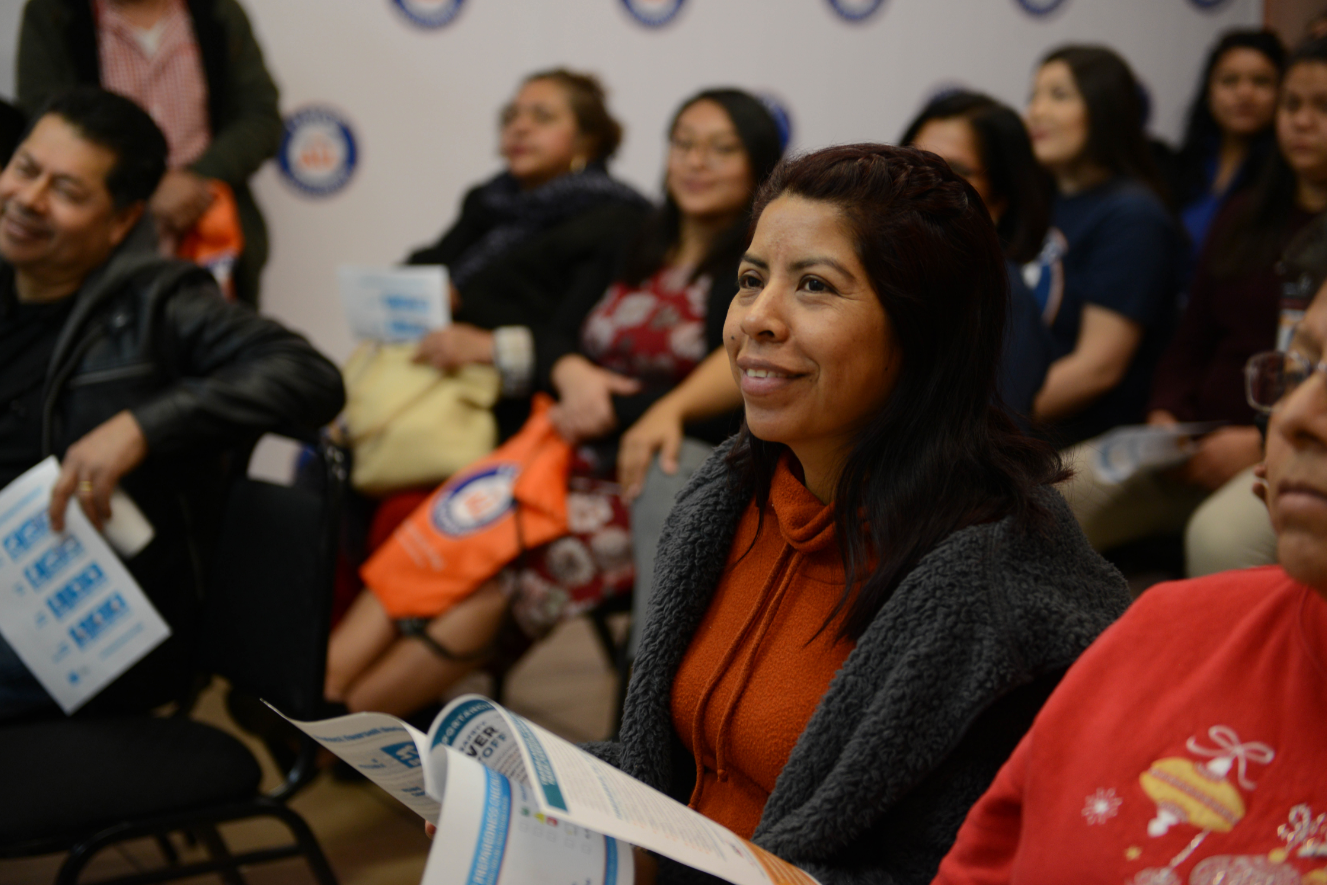
Year after year, California is reminded of the devastation brought by wildfires and other natural disasters. That devastation has disproportionately impacted our state’s diverse and vulnerable populations – our older adults, people with disabilities, residents with language barriers, families in poverty, and others who are isolated, whether due to cultural, geographic, or other circumstances.
Valley Vision was proud to help combat this reality while serving as the backbone organization for the Listos California emergency preparedness campaign from 2019 to 2021. It was our first statewide project with implementation taking place almost entirely outside of the greater Sacramento region, where most of Valley Vision’s work typically takes place.
Listos California is a first-of-its-kind effort to bring equity to disaster preparedness, launched by the Governor and State Legislature in 2019 and anchored at the Governor’s Office of Emergency Services (Cal OES). The campaign was designed with the sole intent of providing diverse and often overlooked populations with knowledge and tools to be better prepared if ever faced with an emergency.
To ensure campaign messaging would effectively reach and resonate with the primary audiences, Listos California took a studied approach and developed new tools in formats and styles to appeal to the diverse audience groups. More than 80 unique assets were developed and presented in more than 20 languages. Perhaps even more significant than the tools developed, however, was the approach that Listos California took to reaching the targeted audiences. The state, through Cal OES and California Volunteers, awarded grants to more than 80 community-based organizations and service organizations around the state. The grantees were selected because they understood their local communities, knew which populations needed to be reached and which trusted voices would capture the attention of targeted populations most. They also knew where to go and which mediums to use to reach the populations. It was this on-the-ground knowledge and ability to customize at the local level that fueled the success of the campaign.

In our role, Valley Vision provided guidance and technical assistance to the grantees to help amplify their respective and collective impact. We also oversaw the work of dozens of creative, strategic, and production consultants and vendors that developed curricula, content, and assets used to engage targeted audiences. This organizational backbone role also provided us with the ultimate vantage point to observe what can be accomplished when you have the right mix of partners, all of whom are passionately committed to a cause.
The state’s initial goal for Listos California was to engage one million diverse and vulnerable Californians with emergency preparedness information. The campaign blew this goal out of the water by ultimately engaging nearly four million residents with actionable emergency preparedness education. These individuals and families are now more prepared and resilient if they are ever confronted by a disaster. The Listos California Impact Report and corresponding Innovations for Equity in Disaster Resilience report share the experience and results of the campaign, and also provide a blueprint and recommendations for how similar equity-focused efforts might be constructed. All those interested in equity – whether specific to disaster preparedness or in other areas – should scan the report and take what you can to inform future work. The strategies employed and lessons learned serve as fodder for those interested in actively engaging populations that have too frequently been overlooked.
To keep up with Valley Vision’s work to advance livability in the Sacramento region, subscribe to our Vantage Point email newsletter!
Alan Lange is Valley Vision’s Director of Production, and project lead for Valley Vision’s contributions to the Listos California campaign.
Air Quality Data Now Monitored in Sacramento Frontline Neighborhoods
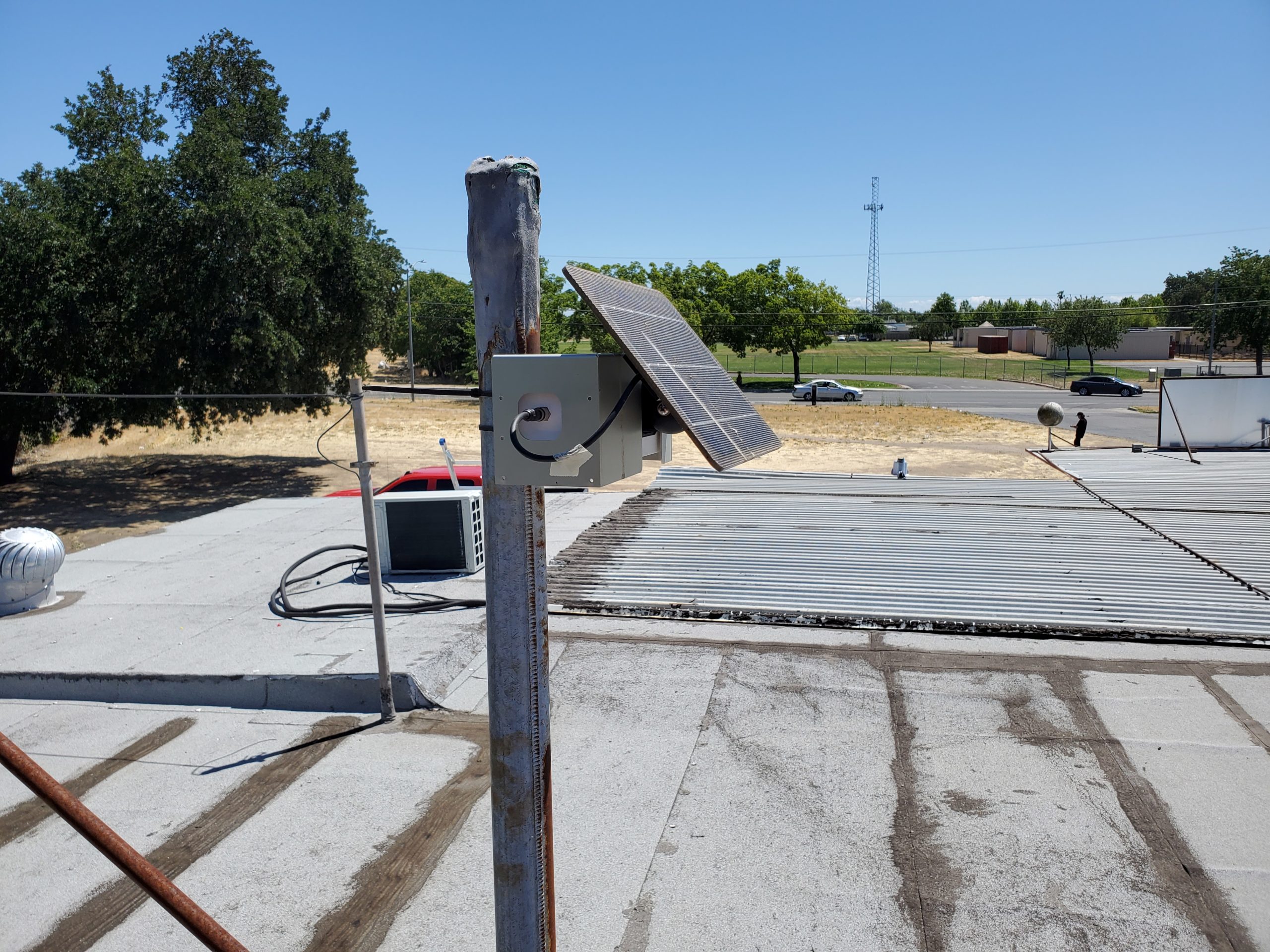
Over 20 air quality monitors being installed on rooftops by community groups in North Sacramento and Oak Park to collect needed data.
SACRAMENTO, CA – JUNE 29, 2021: Efforts to advance environmental justice for frontline Sacramento neighborhoods reached an important milestone with the launch today of a new public data portal that offers live readings from more than 20 rooftop solar-powered air quality monitors. The equipment is part of a larger grant from the California Air Resources Board (CARB), awarded in 2020 to the Sacramento Neighborhoods Activating on Air Quality coalition (SNAAQ).
“Sacramento suffers from serious air quality and public health challenges,” said Patrick Guild, Chief Operating Officer of Breathe California Sacramento Region. “But there are some neighborhoods like North Sacramento and Oak Park that have long been air monitoring ‘deserts’ and we have very little understanding of how poor the air quality may be for residents living in those communities.”
CARB’s Community Air Protection program is meant to help residents of high pollution-burden communities better understand air quality conditions at a block-by-block level and to address environmental injustices. The rooftop monitors measure particulate matter (PM 2.5) and NOx, two types of pollution that cause adverse health impacts that disproportionately fall on communities of color who generally live where pollution concentrations are highest. The new air monitoring equipment is now collecting and transferring data to a public portal, giving residents and advocates a much better understanding of the conditions in these neighborhoods. The data will be evaluated and ultimately will help residents determine future actions and needed investments.
“I think about the generations before and after me, from a researcher’s point of view, and I wonder how many have asthma, allergies, and other health conditions based on factors from their zip codes,” said Nykchasia S. Scott, MSSW, a North Sacramento resident and part of the all-resident committee who determined air monitor locations.
The SNAAQ coalition is comprised of area nonprofits Valley Vision, WALKSacramento, Breathe California Sacramento Region, and Green Tech Education, in partnership with neighborhood residents and clean air advocates who are working together to identify priorities for action that could likely include securing additional funding for clean air projects in our local communities and advocating for new statewide policies and regulations that reduce air pollution.
“This project is fundamentally about ensuring that all residents in our communities are afforded the basic rights to live, work, go to school, play, and pray in a safe, healthy, and clean environment,” said Kiara Reed, Executive Director of WALKSacramento. “We are providing the tools and information that these frontline communities need to adequately and proactively address air quality concerns in their own neighborhoods.”
###
About Valley Vision: For more than 25 years Valley Vision has used research to help governments, businesses, foundations and community groups better understand the issues facing our region. We believe that knowing and understanding the facts is the best way to establish a common working foundation for collaborative problem-solving. That’s why Valley Vision conducts, produces and interprets research including scientific public opinion polls, focus groups, community needs assessments, best practice studies and other research tools to bring to light the information local leaders need to improve our communities.
About WALKSacramento: WALKSacramento is a nonprofit planning and advocacy organization that improves quality of life and health equity in the Sacramento Region through community-centered policy and systems change in land use, transportation, and community development. For the last 20 years, WALKSacramento has worked closely with residents and community partners in institutionally underserved communities to empower community voices and co-create healthier, more equitable, and sustainable neighborhoods for all.
About Breathe California Sacramento Region: Breathe California Sacramento Region is an air quality and tobacco cessation-focused nonprofit that has served Sacramento for more than 100 years. Recognizing the significant impact that lung health has on the overall health of all communities in the Capital Region, Breathe has prioritized two significant areas of lung health in its mission: improving environmental air quality and eliminating commercial tobacco use through meaningful community engagement, enriching educational efforts, strategic partnerships, innovative programming, and effective advocacy.
About Green Tech Education: Established in 2008, Green Tech is committed to providing career technical education, job creation, job training, and entrepreneurial opportunities in the green economic sector. The program serves as a critical economic development resource for youth from underprivileged backgrounds. Green Tech is charged with simultaneously developing clean energy workforce skills and reversing the negative human impact on our environment.
Hybrid Work: The Disruption of 2021

With June 15th passing this week, marking California’s first opening since the pandemic hit, returning to the office and creating hybrid work environments is front of mind for many employers and employees. Microsoft Worklab published a recent report on hybrid work as the next big disruption – what are the big trends, how are they playing out in our region, and where do we go from here?
1. Flexible work is here to stay
Many workers got to experience remote work for the first time and don’t want to leave the positives of the experience behind. Nationwide, 70% want to retain a hybrid model although many are also clamoring for in-person time with their teams. In our region, the COVID-19 Resilience Poll tells us that 63% of workers worked full-time in office before the pandemic but 69% want a hybrid model now to avoid commutes and maintain more flexible hours.
2. Leaders need increased connection to workers
A recent study shows that business leaders are faring better than their employees throughout the pandemic with 61% saying that they are thriving while only 38% of those without decision-making authority say the same. Further, disparities in pandemic impacts are contributing to a divide – younger workers, workers of color, and women have struggled through the pandemic more intensely than others and are less likely to be in leadership roles at work.
3. High productivity is masking an exhausted workforce
Anecdotally, companies are reporting high productivity this year with commute, travel time and distractions of the office eliminated. Microsoft data shows that chats, emails, meetings, and time spent in documents have significantly increased between February 2020 and February 2021. It also shows that 54% of workers feel overworked and 39% feel exhausted. Digital overload and increased isolation are seriously taxing workers.
4. Gen Z is at risk and will need to be re-energized
Gen-Z, or those between 18-25 years old, are feeling these effects the strongest. 60% of Gen Z are merely surviving or flat-out struggling right now. This age demographic reports struggling to get new ideas on the table, get a word in during meetings, and feel excited or engaged about work. Because they are younger, often single, early in career, and less financially stable – isolation, network connections, and meaningful engagement has been much harder during the pandemic. The COVID-19 Poll found that in our region these factors and others contributed to higher rates of stress, anxiety, and depression for our younger respondents.
5. Shrinking networks are endangering innovation
The pandemic shrunk our worlds – both personally and professionally. Research shows that interactions with our close networks increased while our interactions with our more distant networks decreased. This reduces the inflow of new ideas, stifling innovation.
6. Authenticity will spur productivity and wellbeing
2020 was the year that home life was made visible at work – children, pets, and personal spaces came with many of us to our virtual meetings and as a result we had the opportunity to see each other as full humans in ways that never came through in routine office life. Additionally, our shared vulnerability of going through a tough time together bonded co-workers in new ways.
7. Talent is everywhere in a hybrid work world
The pandemic accelerated the notion that we can work from anywhere – and that is exactly what many workers want to do. A study from LinkedIn reports that remote job postings increased five-fold and 46% of workers say they want to move this year, anticipating continued remote work opportunities. Remote work can increase access to job opportunities for underrepresented groups – the same study found that women, Gen-Z, those without a graduate degree are more likely to apply for remote work and women, Black, and Latino workers are more likely than white men to prefer remote work. People are at inflection points in their careers with 41% noting that they’d like to leave their job within the year. In Sacramento County, 40% of jobs are remote eligible by function, as reported by the Bay Area Council Economic Institute. Additionally, the trend is that people in high cost areas are moving to lower cost areas – translating to an influx of Bay area residents to our region, a spike in real estate prices and growth in our professional workforce.
The trends are clear – we are in the midst of major disruption and transition to different ways of doing work. There are some clear recommendations for both employers and the region at large:
Empower workers to be able to work in office or remote environments: a mix of both will result in flexibility, productivity, and increased connection and collaboration. Just as employers pivoted to remote, now is the time to pivot again to safely open offices and create a new type of environment that embraces hybrid work where possible. Solutions should address technology tools, office design, home accomodation, and policy practices that maximize hybrid options.
Combat digital exhaustion starting from the top: Leaders need to understand the challenges of workers and actively promote a culture that encourages strong work/life boundaries and downtime. Organizations and companies need to strengthen diversity, equity, and inclusion practices and policies to address the intersectional burdens that people of color and other underrepresented groups face at work.
Rebuild our collaborative fabric: Isolation and smaller networks have marked 2020 and 2021 so far. Expanding networks, building collaborative opportunities and environments, and reacquainting with more distant networks (slowly for introverts!) will be a key activity of 2021.
Enhance employee experience to attract talent: While workers are reconsidering career, location, and the opportunity landscape, employers must cultivate a diverse, inclusive, and flexible culture to attract top talent.
By maximizing the positives of the remote work experiences that we have experienced while mitigating the isolation and digital overload of the past year, 2021 is an opportunity to build stronger, more resilient organizations and businesses to support a trhiving, healthy, and innovative workforce.
To keep up with Valley Vision’s work to advance livability in the Sacramento region, subscribe to our Vantage Point email newsletter!
Evan Schmidt is Valley Vision’s Chief Executive Officer.
Skills for a Ready Future Workforce

Valley Vision has been examining Future of Work trends for many years. Our latest research was made possible through funding from the City of Sacramento CARES COVID Relief and in partnership with Burning Glass Technologies. This analysis sought to answer the question, where should resources be targeted to provide the most effective skills acquisition and training, especially to disproportionately impacted community members, to enhance and accelerate recovery from the pandemic.
Building on previous work, Automation Risk for Jobs in the Capital Region (March 2020) report looking at the potential impacts of automation in our nine county region, recovery from the pandemic and future workforce development strategies need to be responsive to multiple factors including:
• Meeting current and projected job needs
• Reducing future risk of automation/obsolescence
• Improving job quality (higher wages, benefits and career advancement opportunities)
• Improving equity for communities of color, women and underserved groups
The following white paper highlights the result of these efforts:
To keep up with Valley Vision’s work to advance a future-ready workforce in the Sacramento region, subscribe to our 21st Century Workforce email newsletter!”
Renee John is a Valley Vision Project Leader managing initiatives within the 21st Century Workforce impact area.
New Study of Region’s Food System – and Prevailing Gaps – to Launch
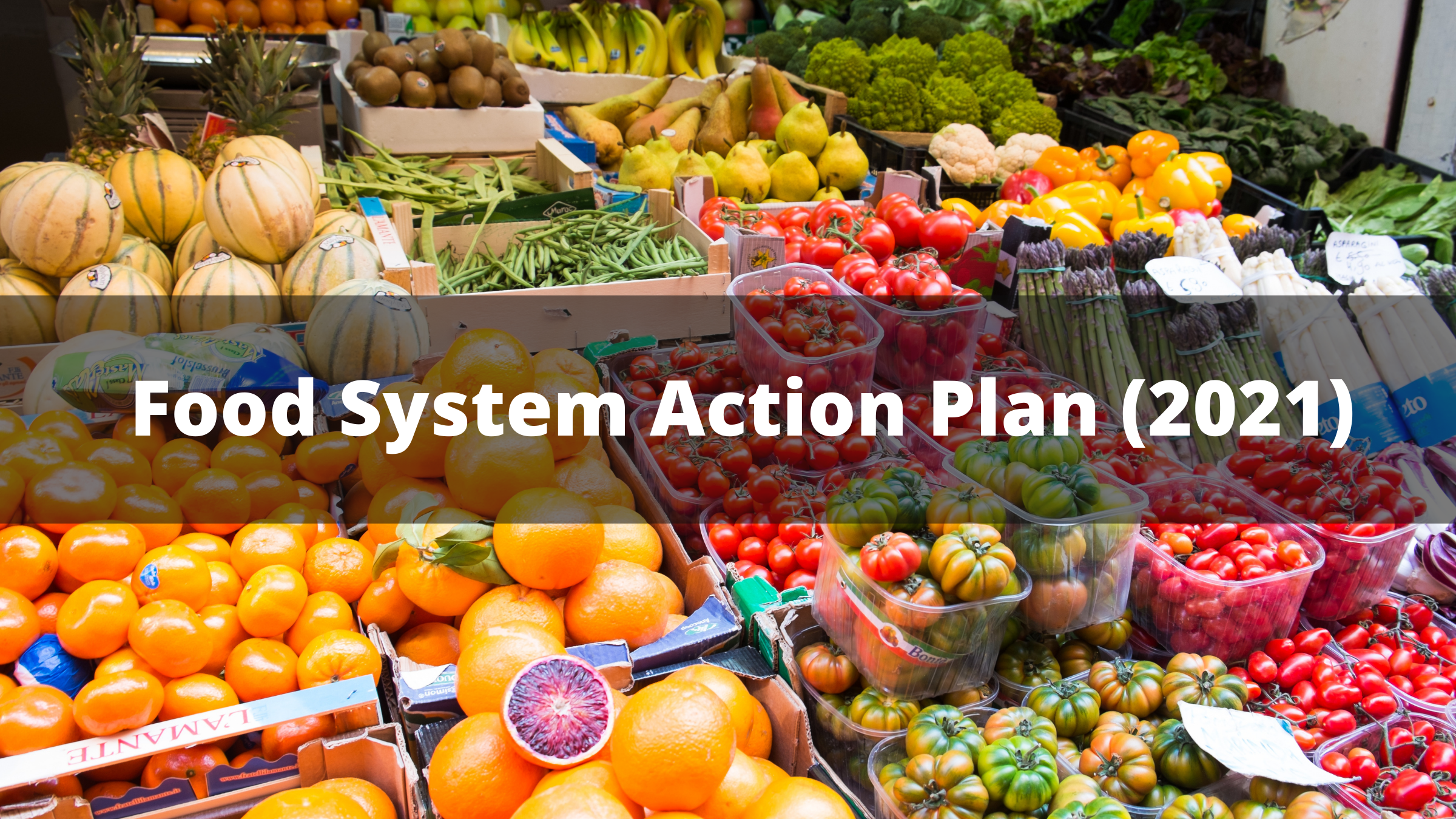
SACRAMENTO, CA – MAY 19, 2021: The Sacramento Region Community Foundation (Foundation) and Valley Vision announced today a new research study being jointly launched on the region’s food economy and prevailing gaps in the greater Sacramento region’s food system. The research will inform recommendations for investment strategies to strengthen the region’s food system capacity and resiliency.
“The region’s food system is dynamic and complex,” said Linda Cutler, CEO of the Sacramento Region Community Foundation. “While the overall food economy has advanced in recent years through dedicated efforts like new job creation, workforce programs, institutional procurement, and food literacy, disparities persist around food access, security, and system capabilities that have been further exacerbated by the COVID-19 pandemic.”
The study will build upon earlier work highlighted in the Sacramento Region Food System Action Plan (FSAP), a seminal study conducted by the Foundation in partnership with Valley Vision in 2015. The FSAP laid the building blocks for a regional roadmap and identified an actionable role for the Foundation that it has worked to implement since.
Valley Vision conducts public opinion polls in partnership with the Institute for Social Research at Sacramento State and will field this new poll in June to collect data on residents’ experiences, perceptions and needs related to accessing food. The Food System poll, in addition to other engagement and data inputs, will provide the Foundation with invaluable information that will be used to update the 2015 FSAP.
“The ultimate goal of this research is to ensure the viability of the food and ag economy at all scales,” said Valley Vision CEO Evan Schmidt. “This includes increasing the amount of locally grown food distributed within the regional food system, increasing access to fresh, affordable produce, especially in underserved communities, and increasing consumption of healthy foods through access to nutrition education.”
The research findings will support meaningful collaborations among food system partners and improve alignment of system activities and investments. Findings will also help identify compelling short- and longer- term priorities and establish a baseline for future progress.
“This is incredibly important work for our region,” said Kate Stille, Sacramento Region Community Foundation Board Chair and Chief Impact Officer for Nugget Markets, Inc. “We can point to real and tangible results born out of the 2015 FSAP, which has dramatically improved food security in underserved communities by strengthening the emergency food distribution network.” The 2015 FSAP inspired a partnership between the Foundation and Sacramento Food Bank & Family Services to form the Neighborhood Food Access Networks, which today serve hundreds of thousands of people by networking together more than 200 emergency food distributors across Sacramento neighborhoods.
The work to strengthen the food system is all-the-more critical given the COVID-19 pandemic, which greatly impacted health and economic disparities in the local community. High unemployment has increased the level of need for food. Local food banks, schools, restaurants, and many others have created new distribution mechanisms to respond to the crisis. The FSAP is a blueprint for action that will help shape these types of strategic initiatives, as well as to inform local leaders and the community on how to engage in meaningful solutions and catalyze investments in our vital food system.
“A systems approach centered on equity is needed,” said Schmidt. “Understanding food access and security issues is paramount to ensuring a health-promoting and accessible food system that can serve the needs of those who live in the region as well as those who benefit from our rich agricultural valley nationally and globally.”
The public opinion poll will go into the field in June and findings are expected to be published in September.
###
About the Sacramento Region Food System Action Plan (FSAP): FSAP was a seminal study conducted by the Foundation in partnership with Valley Vision in 2015 and provided a common framework along with integrated goals, strategic priorities, and recommended actions to strengthen the food system for the region. Intended to serve as a roadmap for food system development, function, and investment, the FSAP identified several disconnects in the food system, including the gaps between great food abundance and a vibrant economic sector, high levels of food insecurity, poor food-related health outcomes, and missed opportunities for local food sourcing and markets.
About the Sacramento Region Community Foundation: For over 35 years, the Sacramento Region Community Foundation has been the capital area’s trusted steward of charitable assets and champion for impactful philanthropy. The Foundation’s mission is to transform the capital area through focused leadership and advocacy that inspire partnerships and expand giving.
About Valley Vision: For more than 25 years Valley Vision has used research to help governments, businesses, foundations and community groups better understand the issues facing our region. We believe that knowing and understanding the facts is the best way to establish a common working foundation for collaborative problem-solving. That’s why Valley Vision conducts, produces and interprets research including scientific public opinion polls, focus groups, community needs assessments, best practice studies and other research tools to bring to light the information local leaders need to improve our communities.
Spring Advisories: Preparing our Regional Workforce for Success
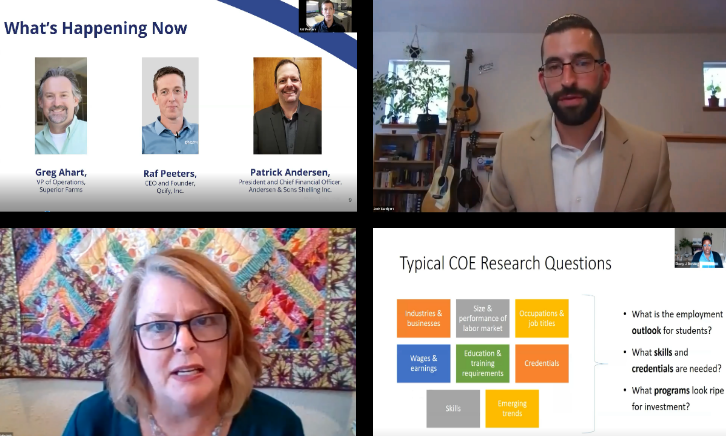
April 2021 was a month filled with dynamic industry discussions for Valley Vision, as it hosted three Regional Industry Advisories funded by Los Rios Community College District Strong Workforce Program and in partnerships with Sierra College, Yuba Community College District, and the Capital Region workforce boards. The Advisories’ objectives included building strong relationships between employers, educators, and workforce partners that provided timely information on skills gaps and opportunities for more ongoing engagement. April’s advisories served to foster workforce pipelines into the Sacramento Region’s diverse sectors, some of which have been especially harmed by the ongoing COVID-19 pandemic. However, as emphasized throughout the Advisories, the region’s workforce partners can play a strong role in meeting industry demand for a skilled workforce that helps industries pivot and thrive.
The month’s series of virtual Advisories began with Retail, Hospitality, and Tourism (RHT), an industry especially hard hit by the COVID-19 pandemic, but in recovery. Keynote Speaker Mike Testa of Visit Sacramento shared an optimistic re-opening of Sacramento’s RHT industry and its benefits for the region, saying “This isn’t just about the City of Sacramento – it’s about everybody else“. An Industry Insights Panel featuring employers followed, emphasizing how businesses pivoted with COVID-19 and their demand for a diverse RHT workforce that possesses critical thinking, emotional intelligence, and communication skills. Afterwards, Dr. Robert Eyler offered an engaging presentation on economic and policy conditions behind the RHT industry. For a more detailed look at the Advisory, take a look at our separate blog on the event here!
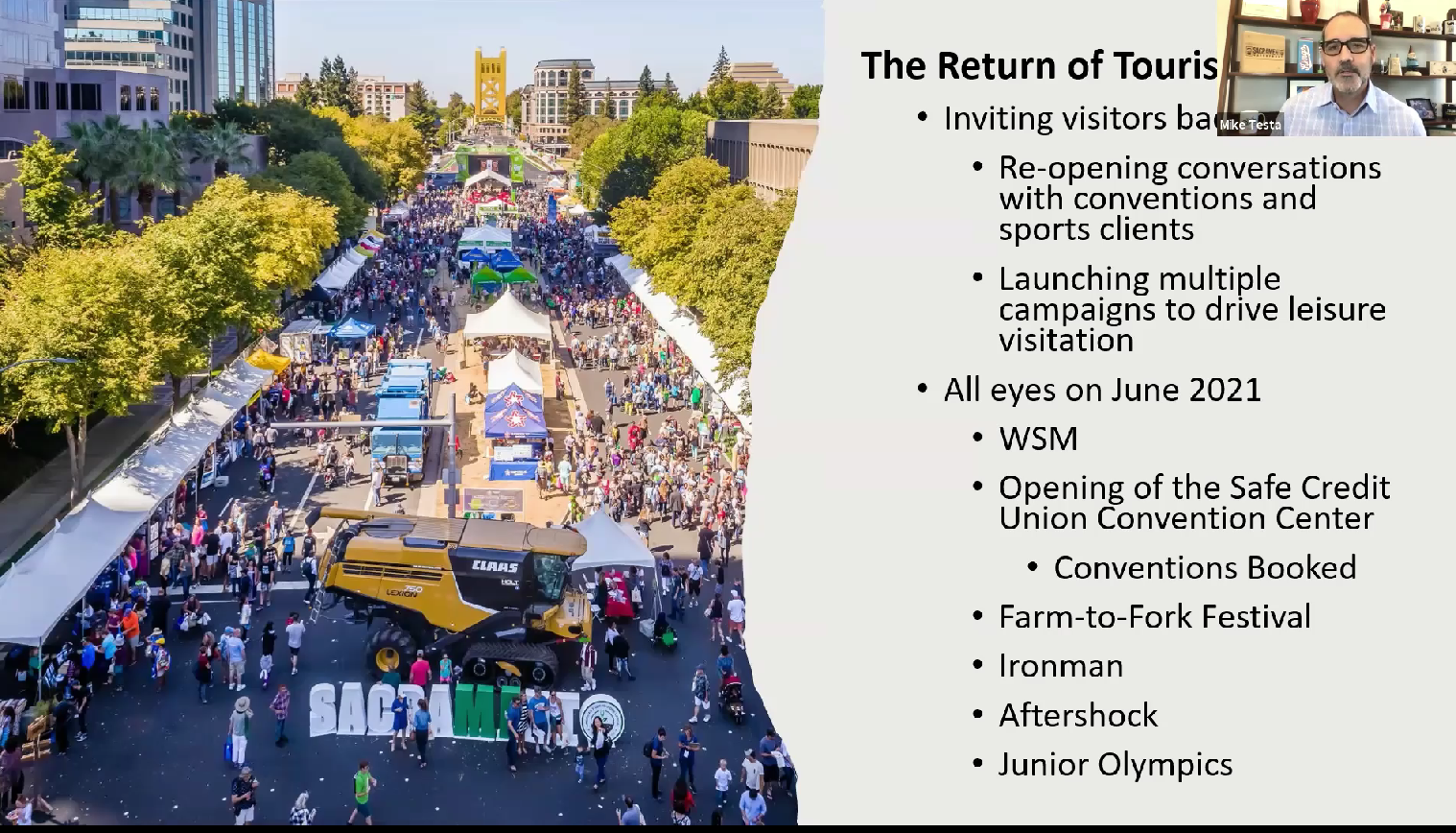
Next was a Regional Industry Advisory on Gerontology, Geriatrics and Business Services in the Field of Aging, which began with a presentation on shifting demographics and occupational data by North/Far North Center of Excellence Research Manager, Ebony Benzing. This data further informed industry insights provided by keynote speaker Leading Age California President and CEO, Jeannee Parker Martin, and the employer panel on arising issues in the field. Towards the end of the event, American River College’s Gerontology Department Chair and Career Education Program Coordinator, Laurinda Reynolds, presented on ageism and interventions that could promote careers in the field.
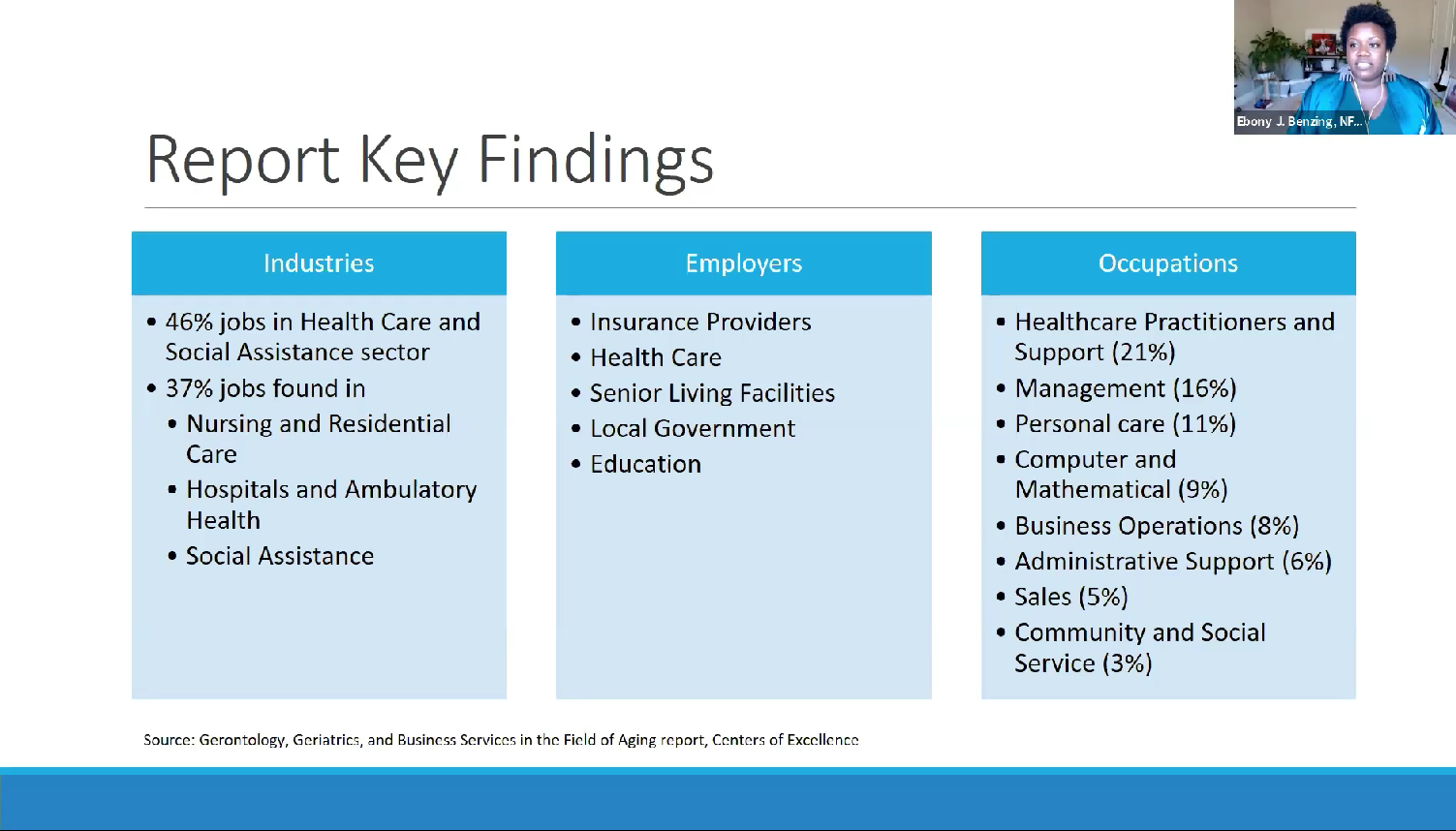
The month’s Advisories finished off with a cross-sector look at Automation & AI in Agriculture and Manufacturing. The event uniquely featured two industry panels, one focusing on current employer needs and the second focusing on the future of automation in food processing. “There’s a common theme when you walk into a processing plant… how can we keep the plant running, with limited supply of people who are available? That is the biggest challenge,” described Raf Peeters, CEO and Founder of Qcify, Inc. and one of the Advisory’s employer panelists. Employers went on to describe the need for workers who can operate this automation and AI technology, which workforce partners can assist with through course development and trainings
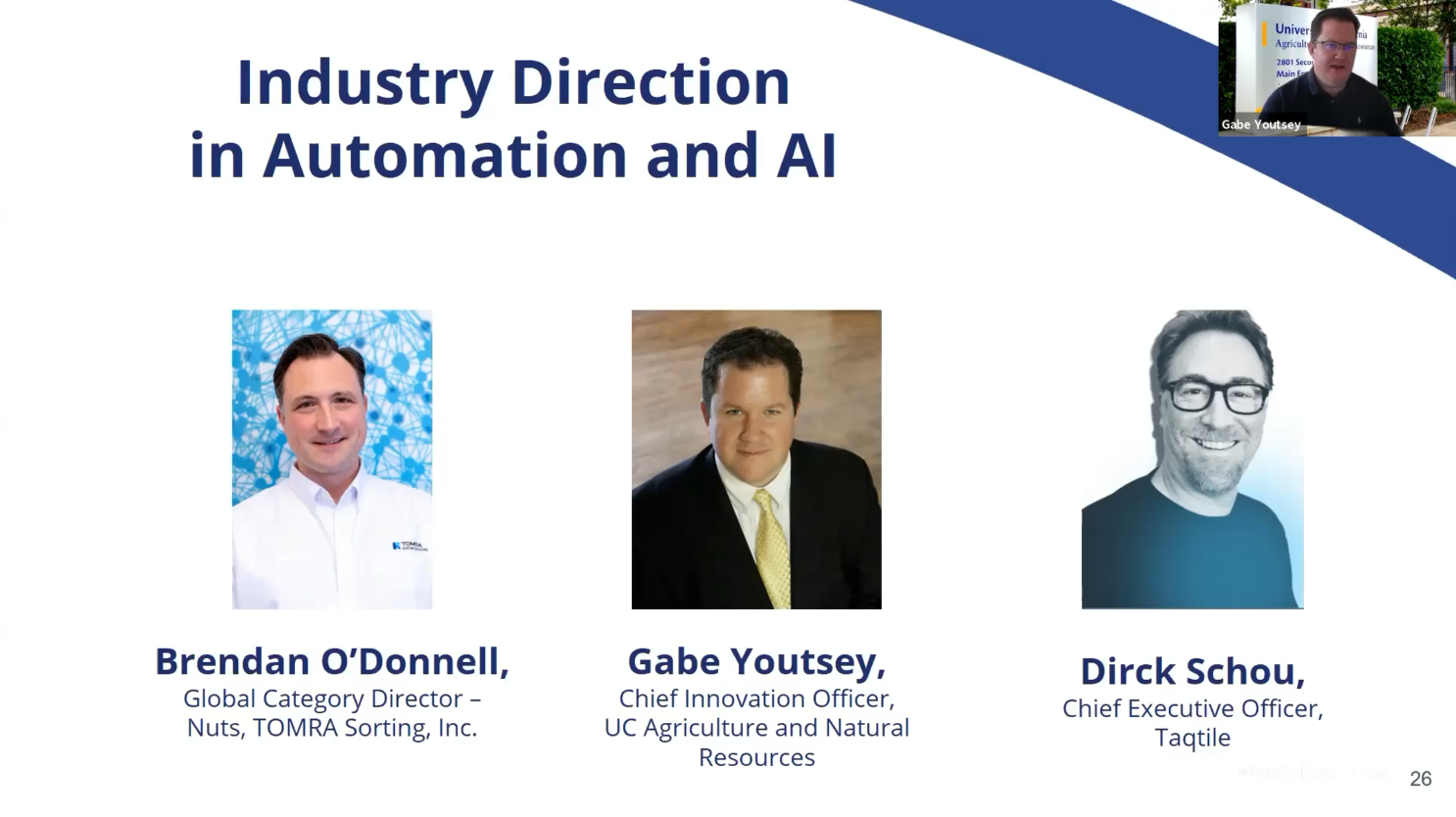
By the end of April, Valley Vision and its community college and workforce partners had successfully facilitated a wide range of opportunities for employer engagement to inform curriculum development. The ongoing pandemic’s toll on Sacramento Region industries has made it increasingly important for workforce pipelines to be responsive to employer and worker needs. These needs have been carefully documented by Valley Vision staff throughout its 2020-21 academic year advisories, which included data-driven presentations and employer discussions on the following sectors:
- Advanced Manufacturing
- Agriculture, Water, and Environment Technologies
- Business and Entrepreneurship
- Energy, Construction, and Utilities
- Health Services
- Information and Communication Technologies
- Retail, Hospitality, and Tourism
Additional information on advisories can be found via the links above. Valley Vision and the Sacramento Region’s workforce stakeholders greatly appreciate the attendees who have contributed their valuable insights into the curriculum development process.
To keep up with Valley Vision’s work to advance a future-ready workforce in the Sacramento region, subscribe to our 21st Century Workforce email newsletter!
Jesse Flores is a Valley Vision Project Associate supporting initiatives within the 21st Century Workforce and Clean Economy impact areas.
Retail, Hospitality and Tourism Headed Toward Recovery

While many different industries and sectors bore the brunt of the impacts of the past year’s pandemic, few were as impacted as Retail, Hospitality and Tourism (RHT). As we look forward to a post-pandemic world, what will the future of these industries look like in our region?
On April 16th, Valley Vision, in partnership with the Los Rios Community College District, and in collaboration with Sierra College, Yuba Community College District and the Capital Region workforce boards, held a Regional Advisory on Retail, Hospitality, and Tourism occupations and careers. Regional Advisories provide forums for industry and employer representatives to discuss their current and expected skill needs with educators and workforce system stakeholders. These advisories, funded by Strong Workforce Program, ensure community college and workforce training programs are responding to industry needs, preparing students and community members for the continuously evolving world of work.
The advisory began with Mike Testa, President and CEO of Visit Sacramento, providing an encouraging forecast. He discussed multiple events and campaigns scheduled to draw visitors back to our region including Farm-to-Fork Festival, Tower Bridge Dinner, Ironman Triathlon, Aftershock Music Festival, and Junior Olympics in 2022. The anticipated reopening of the Safe Credit Union Convention Center will also be a huge draw for visitors and conference attendees. Visit Sacramento looks beyond simply boosting the economy, and providing jobs as the city reopens according to Testa, “At Visit Sacramento, internally we say that tourism isn’t about the tourist – it’s about driving revenue for the residents that live here. The money that comes in improves the lives of our residents.”
Next up, Dr. Robert Eyler, President of Economic Forensics and Analytics, Inc., provided a look at the changing dynamics in these industries over the last year and projections for recovery. Examining from a macro lens, he described how the hospitality industry in California displayed the most dramatic job loss, at nearly 30% loss of employment since March of 2020. While a handful of sub-sectors within the Retail industry profited during the pandemic, including e-commerce, retailers selling building or gardening materials, and food or beverage retailers, the majority of the industry suffered job losses from 2.6% to 18.6%. Dr. Eyler remarked that while the past year for the RHT sector has been grim, Summer 2021 hints at the beginning of recovery for restaurants and retail with travel picking up in 2022 and 2023, and full recovery (pre-COVID levels) expected by 2024 or 2025.
Several regional employers participated in the panel discussion including: Tim Stallings – Sacramento Republic Football Club; Bahar Abullarade – Raley’s Supermarkets; Alycia Harshfield – California Restaurant Foundation; Bobbin Mulvaney – Mulvaney’s Building & Loan Restaurant; and Lynn Mohrfeld – California Hotel and Lodging Association. They shared the ways COVID-19 affected their businesses and delved into the types of skills and knowledge students and individuals interested in joining the RHT sector will need. The panelists unanimously agreed that emotional intelligence skills – often known as “soft skills” – were crucial indicating candidates who possess critical thinking skills, interpersonal skills, and the ability to effectively communicate are highly sought after. In the digital age of the pandemic, panelists explained that most of their workers quickly adapted to technological changes, but struggled when it came to effectively connecting with their clientele and fellow staff members. The employer panel also stressed the importance of team-building, working collaboratively, and the ability to work with diverse groups.
While the pandemic has brought with it a continuous wave of uncertainty, the promising projections from Mike Testa and Dr. Eyler, along with accounts of resiliency and adaptability from industry representatives, provided an encouraging picture of a sector headed toward recovery. Even within an increasingly technological age, this advisory has shown the way to be successful in RHT occupations and careers is to embody key parts of the industry itself – forming connections, working together, and serving your community.
To keep up with Valley Vision’s work to advance a future-ready workforce in the Sacramento region, subscribe to our 21st Century Workforce email newsletter!
Caitlin Blockus is a Valley Vision Project Associate supporting initiatives within the 21st Century Workforce impact area.